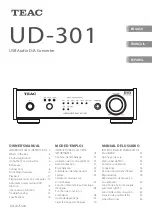
Installation
975-0126-01-01
41
Battery Types
For the purposes of this discussion, there are two principal types of batteries:
starting and deep-cycle. Batteries are either sealed or vented. However, there are
even different kinds of these batteries. This section explains some of the
differences among lead-acid batteries to help you choose a battery that best suits
your needs.
Your RS2000 Sine Wave Inverter/Charger is designed for use with deep-cycle,
lead-acid batteries. These batteries are designed for deep discharge service where
they will be repeatedly charged and discharged. This type of battery is often
labeled as a marine, recreational vehicle, or golf cart battery. Xantrex recommends
that you use one or more deep-cycle batteries separated from the starting battery
of your vehicle or boat.
Starting Batteries
Do not use starting batteries with your inverter; they will wear out rapidly in a
deep-cycle application. The way they are rated gives a good indication of their
intended use: “Cold Cranking Amps” is a measure of the amperage output of a
battery intended for starting or “cranking” an engine.
Starting batteries use many thin plates to maximize the surface area of the battery.
This allows very high starting current. In a deep cycle application, these batteries
will limit the number of cycles that can be supported before the battery needs to be
replaced.
Deep Cycle Batteries
Deep-cycle batteries are best suited for use with inverters. They are designed to
have the majority of their capacity used before being recharged. Available in
many sizes and types, the most common is the non-sealed, liquid electrolyte type
referred to as a “flooded (or wet)” battery, commonly used in both boats and RVs.
Non-sealed types have removable battery caps. The caps should be removed at
least monthly so the electrolyte level can be checked. When a cell is low, only
distilled water should be added. “Spring” water and regular tap water may have
high mineral levels which can poison the battery chemistry and reduce battery
life.
Deep-cycle, lead-acid batteries can be grouped into five categories:
•
Flooded (or wet)
•
Sealed flooded (“maintenance free”)
•
Recombinant flooded (often “starved electrolyte”)
•
Gel batteries
•
AGM
Summary of Contents for RS2000
Page 1: ...RS2000 Sine Wave Inverter Charger Installation Guide RS2000...
Page 2: ......
Page 3: ...RS2000 Sine Wave Inverter Charger Installation Guide...
Page 8: ...iv 975 0126 01 01...
Page 16: ...xii...
Page 18: ...xiv...
Page 49: ...Installation 975 0126 01 01 31 Figure 12 Connecting the BTS Cable to Battery Temp jack...
Page 56: ...Installation 38 975 0126 01 01 Figure 15 Inverter Charger Dimensions...
Page 75: ......
















































